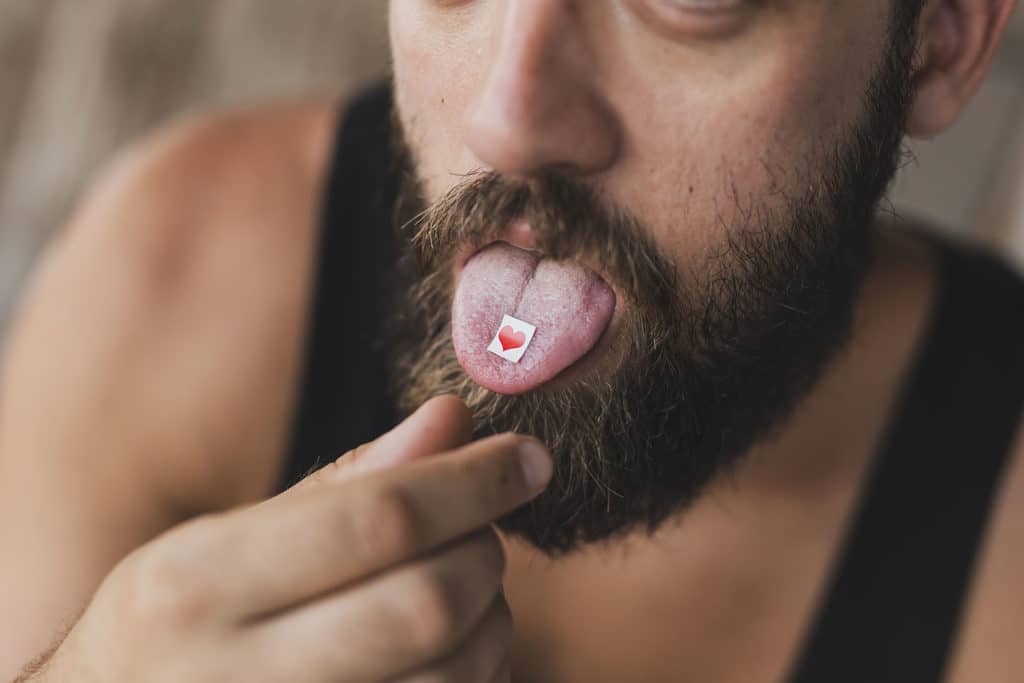LSD (Lysergic acid diethylamide) or acid has a half-life of 5.1 hours (approximately). Overall, LSD is fully metabolized and excreted by 24 hours after consumption. However, several other factors need to be acknowledged when it comes to how long the drug stays in a person’s system.
Testing for LSD

Finding out whether or not a person has LSD in their system can be done with tests in a few different ways. The various methods of finding out how long the drug can be found in a person’s system are unique and yield different results.
- Hair: Lysergic Acid Diethylamide (LSD) can be detected with a hair test for as many as 90 days. However, hair tests are not the most reliable and are very rarely used in drug tests.
- Urine: With a urine sample, LSD can be found eight hours after being used up to two to four days after that time.
- Blood: Depending on usage, blood tests can detect LSD between 8 to 16 hours after consumption with a blood test. Detecting LSD after 16 hours with a blood test is unlikely and untraceable (not able to detect) after 24 hours.
- Saliva: Unlike many other drugs, LSD does not show up on a typical saliva test.
| Test | Saliva | Blood | Urine | Hair |
|---|---|---|---|---|
| Time | N/A | 24 hours | 4 days | 90 days |
More info about LSD consumption
LSD can affect a person’s body for as long as 12 hours after initially being taken, peaking around an hour and a half into the experience. The effects soften a bit and reach half what they were around 3.6 hours. The rapid effects of the drug are because LSD only takes about 10 to 15 minutes to reach the bloodstream once ingested.?
Numerous legal drugs can cause a person to test positive for LSD. This is one reason why all LSD tests are done carefully and with a second independent testing technique.
Factors that increase or decrease the time spent in a person’s system
The amount of time LCD is present in a person’s system can vary per person depending on a few things. The following things can factor into how long you can detect LSD in a person’s system.
Factors that affect LSD Detection:
- Age/metabolism: Younger People generally have a faster metabolism than those who are older, thus impacting the amount of time the drug stays in their systems.
- Strength of the liver: The liver’s strength is a huge factor in a person’s ability to metabolize LSD.?
- Weight: Like age, the weight of a person can play a profound role in how long LSD is present.
- Hydration level: Whether or not a person has been drinking water or not can be important not only for the time the drug is in the system but also to keep a person from getting sick.
- Combination with other drugs: If LSD is combined with other drugs, the time it stays in a person’s system can be drastically increased.

Can a person cut down the amount of time LSD is in their system?
There are a few ways to get LSD out of your system a bit faster. There is no foolproof method, but these techniques may work.
- Get exercise: Exercise can help to accelerate a person’s metabolism. This will, in turn, process the drug through your system faster.
- Cut usage: Clearly, not doing any further dosages will mean the drug will leave faster.
- Drink lots of fluids: Drinking lots of fluids will also lead to faster metabolization and get the drug flushed out through urination, lowering the amount of time LSD stays in your system.
Used together, these factors could be used to influence how long LSD stays in your system.
Is LSD Addictive?
The National Institute on Drug Abuse (NIDA) explains that regular LSD use is not addictive because it does not cause uncontrollable urges to repeatedly use the drug.
Why do people try LSD?
The effects of LSD are pretty unique and start just 20 to 90 minutes following the first dosage. Since it is a Schedule I hallucinogenic drug, a person’s perceptions are greatly affected. The drug is not addictive but can cause long-term mental health and physical consequences. After heavy usage, a person becomes more tolerant and has to take higher dosages for the same effects.
Symptoms include sweating, dry mouth, hallucinations, sleepiness, emotional shifts, and much more. People who take too much of the drug can have a “bad trip,” which can be an experience full of terror and panic.
Be sure to weigh all of the aspects when thinking about trying LSD. It is not the kind of drug to take casually, so be aware of all of these considerations.

